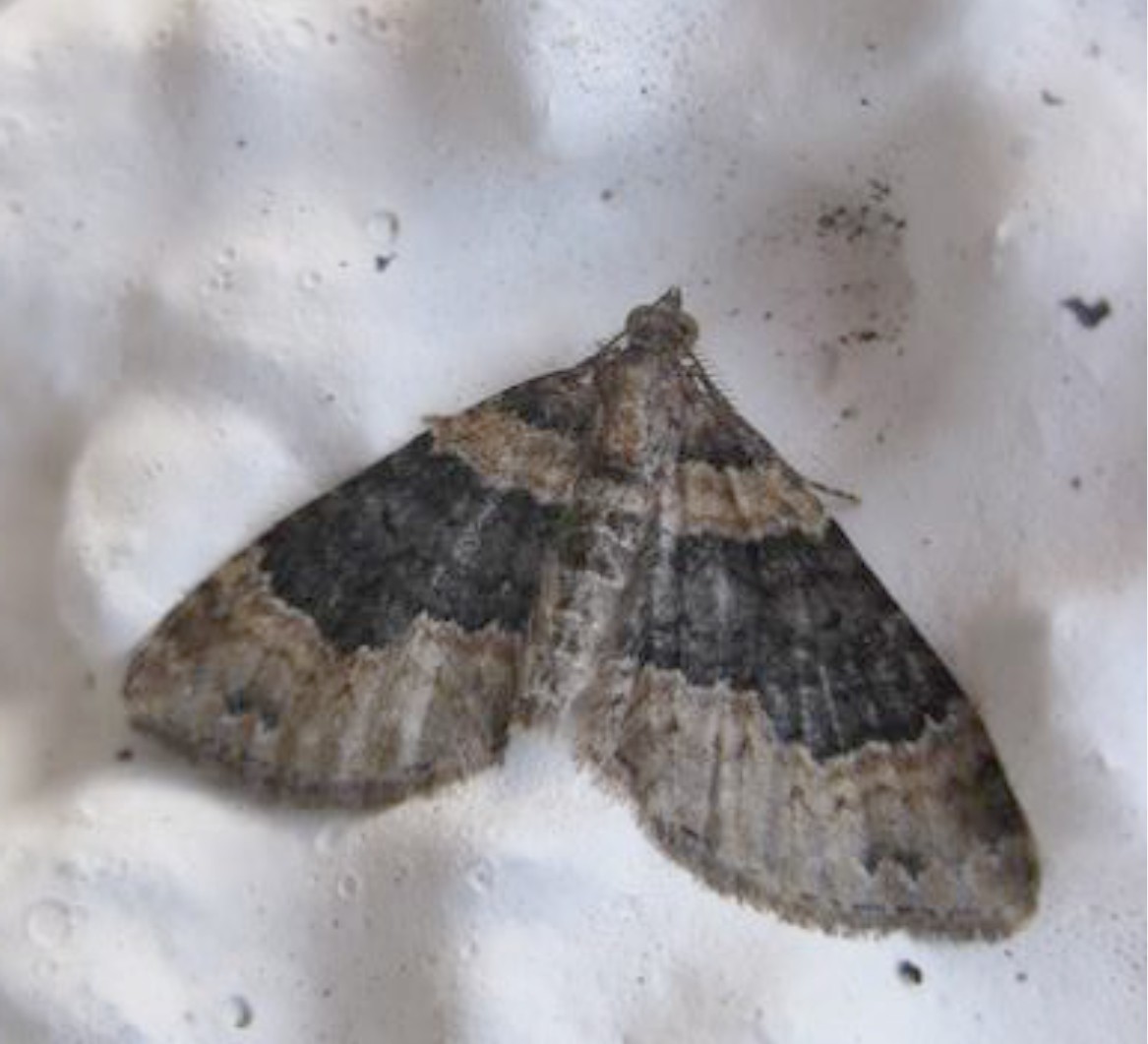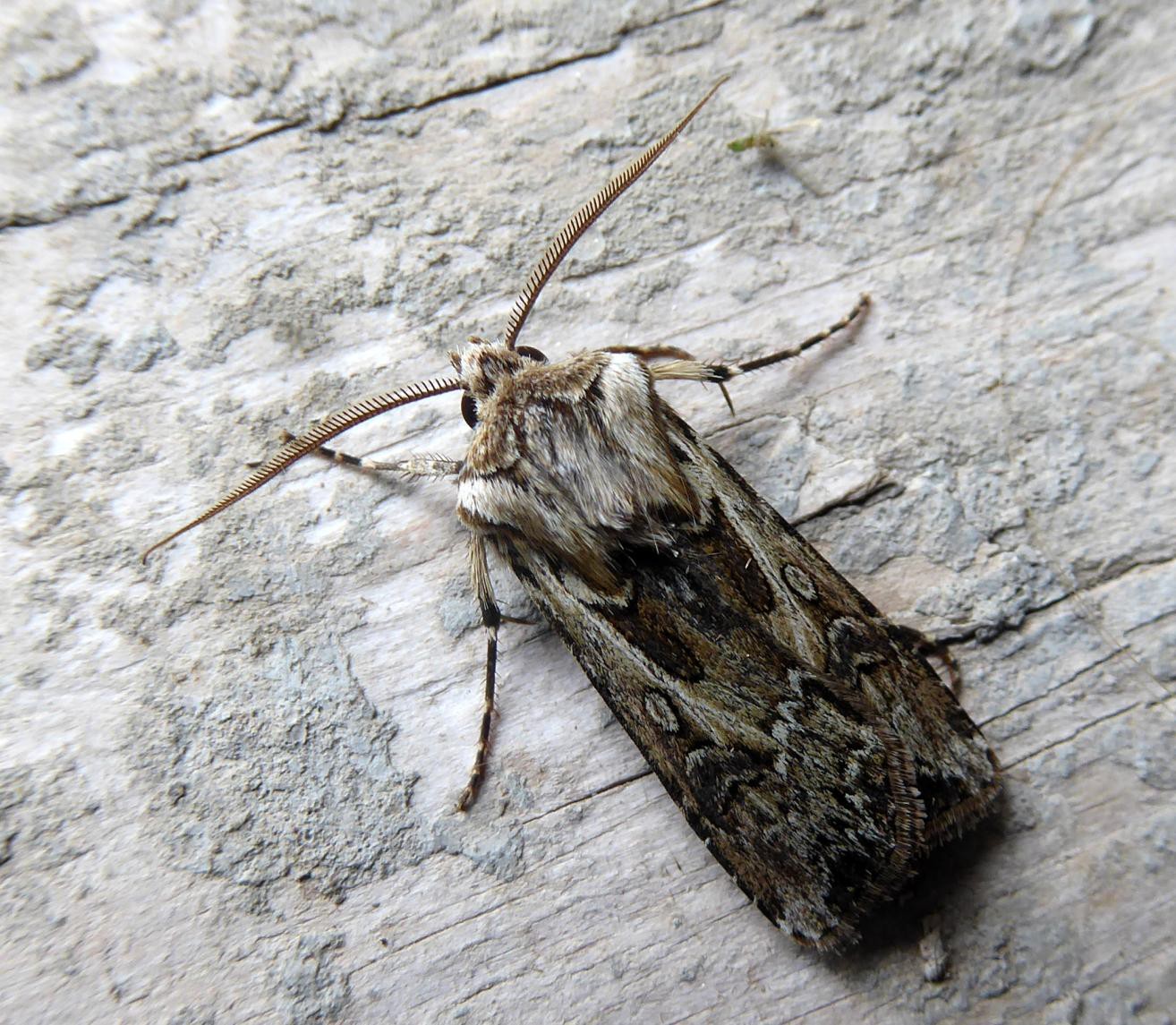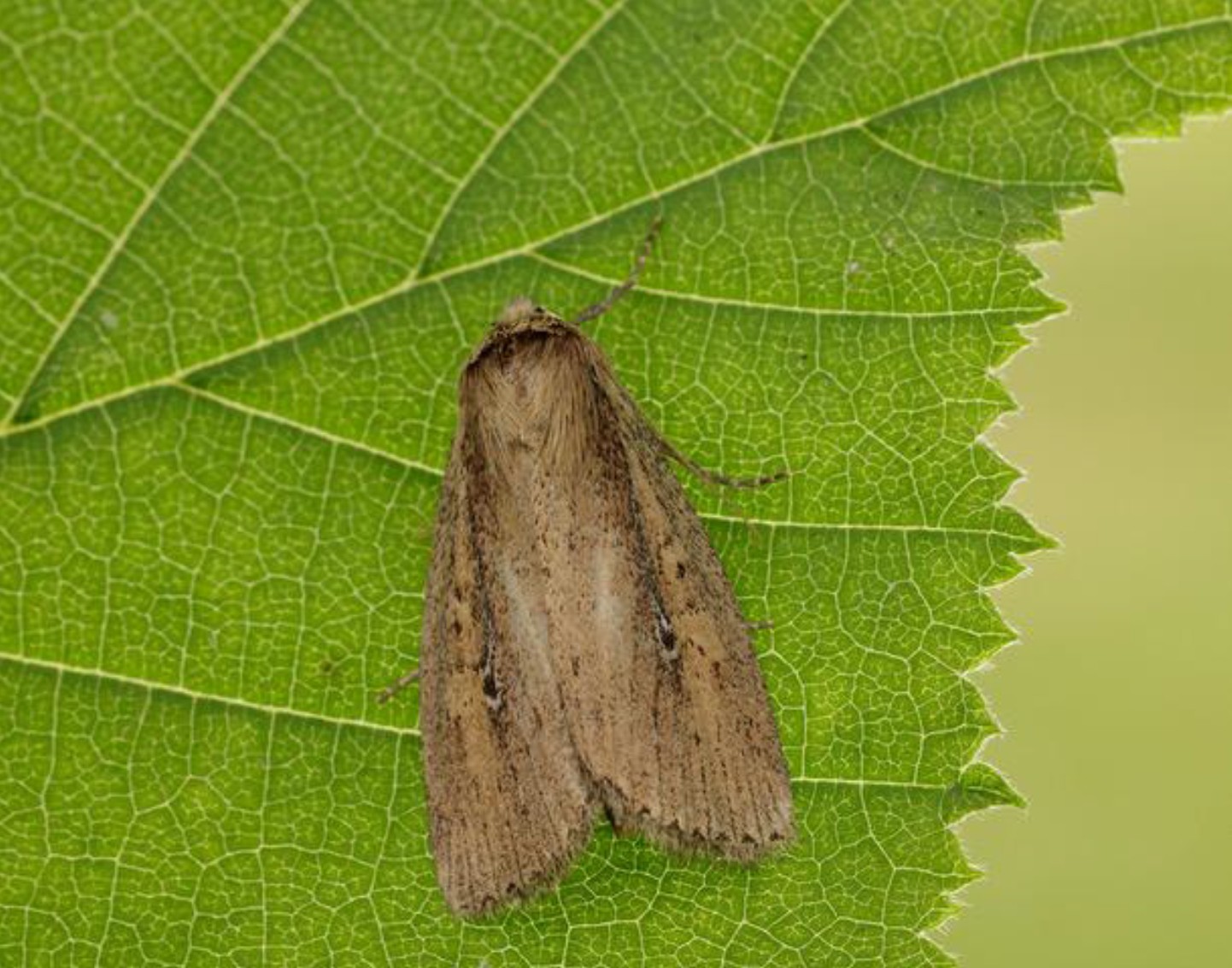This moth is at is at the beginning of its emergence period and it is quite possible to find it anytime between now and September. However, if you look at all the records there are for it there are two distinct peaks in numbers. The first of these will be near the end of this month as the moths emerge from their underground pupae. The caterpillars produced by this generation pupate in July and emerge in August to produce a clear second generation. The caterpillars produced then eventually pupate and overwinter before beginning the cycle over again.
Several other moths do something similar but this one is probably so successful because its caterpillars feed on a wide range of common, low growing plants such as bedstraws, docks and dandelions. The caterpillar is a typical looper with a grey-brown body with narrow whitish lines along its length and small, elongated black spots along the back.
With well over 1000 records for D&G this is a widespread and quite common species – here. If you look at the records for Scotland it is obvious that this is a western species with particularly dense population in D&G and the far west. There are scattered records for the rest of Scotland and further south in England it is fairly widespread.
This moth is sometimes confused with the Red Twin-spot Carpet as on occasions there are individuals with a paler cross band. Moths looking like the above but with pale/reddish cross band could be either and in many cases can only be confirmed by examining the genitalia – which are quite distinct in both sexes. The Red Twin-spot Carpet is far less common in D&G (about a tenth of the records), has only one generation peaking late in the year.




